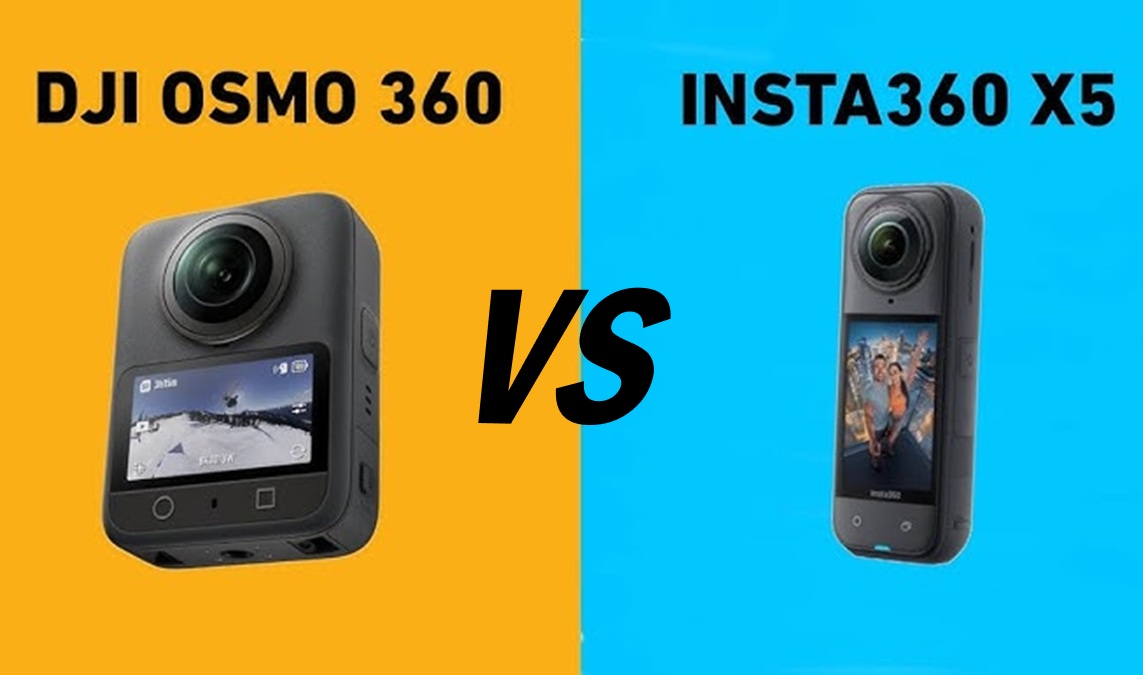Just returned from Palma de Mallorca, and the only camera I brought with me was the Insta360 X5. What I really appreciate about this camera is the ability to reframe your videos after you’ve already shot them. The newly released Osmo 360 promises the same performance but with the comfort of integration within the DJI ecosystem. Let’s find out how this newcomer competes with a fifth-generation 360 camera.
Dual-lens cameras such as the DJI Osmo 360 and the Insta360 X5 feature gives you incredible creative freedom, allowing you to capture immersive footage without needing to carry heavy and bulky gear everywhere. Traveling light made my trip much easier and more enjoyable, and the Insta360 X5 didn’t disappoint when it came to image quality and ease of use. Whether I wanted to focus on a specific moment or explore different perspectives, the post-shoot AI reframing options made editing a breeze.
DJI has a slightly different take on the camera format compared to Insta360. While the X5 adopts a nut bar form factor and measures 124.5 × 46.0 × 38.2 mm, the Osmo 360 has a more rectangular shape and measures 81 × 61 × 36.3 mm. The Osmo 360 is 17 grams lighter (183g vs 200g) than the X5, making it more suitable for mounting on FPV drones. The extra weight is somehow understandable as the X5 is powered by a higher capacity battery (2400mah vs 1950mah).
DJI Osmo 360 vs Insta360 X5: In-depth comparison table
To help you better understand the key differences between the DJI Osmo 360 and the Insta360 X5, we’ve put together a detailed comparison table. From camera specs and video resolution to battery life, lens design, and durability, this side-by-side breakdown highlights how each model stacks up. Whether you’re a casual content creator or a professional 360° filmmaker, this comparison table will help you make an informed decision based on your specific needs and budget.
| Features | DJI Osmo 360 | Insta360 X5 |
| Sensor | Dual 1/1.1″ | Dual 1″ |
| Chipset | N/A | Triple AI |
| Touchscreen | Size: 2.0 inches Resolution: 314×556px |
Size: 2.5 inches Resolution: 440x960px |
| Video resolutions | 8K@30fps & 5.7K@60fps | 8K@30fps & 5.7K@60fps |
| Photo Resolution | 72MP (stitched) | 72MP (stitched) |
| Active HDR | Yes | Yes |
| Max video bit rate | 170Mbps | 180Mbps |
| Color Profile Support | D-Log M, 10-bit HDR | LOG, 10-bit HDR |
| Stabilization | RockSteady 3.0 (built-in) | FlowState + Horizon Lock |
| Audio | 3-mic array with wind reduction | 4-mic spatial audio |
| Battery | 1950mah | 2400mah |
| Run time (8k@30fps) | ~80 mins (8K) ~110 mins (5.7K) |
~70 minutes (8K) ~100 mins (5.7K) |
| Replaceable lenses | No | Yes |
| Waterproofing | Up to 10 meters (in certain conditions!) | Up to 15 meters |
| Built-in memory | 128GB (105GB available) | No |
| Storage | microSD (up to 1TB) | microSD (up to 1TB) |
| Mounting | Osmo Magnetic Quick-Release Ecosystem | 1/4″ and Magnetic Quick Release |
| AI editing | DJI Mimo Smart Editor | Insta360 Studio + AI Highlights |
| Dimensions | 81×61×36.3 mm | 124.5×46.0x38.2 mm |
| Weight | 183 grams | 200 grams |
| Release date | July 2025 | April 2025 |
| Price (MSRP) | $599 USD | $549.99 |
As you read in the table above, both 360 cameras can shoot in 8K, but the Osmo 360 has the edge when it comes to frame rates—offering up to 50fps, while the X5 maxes out at 30fps. Drop the resolution to 5.7K, and the frame rates become more comparable. At 4K, both cameras support high frame rates suitable for smooth 4× slow-motion footage, making them equally capable for capturing fast action.
Both cameras feature advanced digital image stabilization—RockSteady 3.0 on the Osmo 360 and FlowState with Horizon Lock on the Insta360 X5. These systems are designed to smooth out motion and eliminate shake, making handheld or action footage look steady and professional, even when shooting on the move or in challenging conditions
DJI Osmo 360 vs Insta360 X5 Comparison Shots in Various Scenarios
Bottom line
For anyone who loves adventure but hates lugging around a lot of equipment, both these 360 cameras are definitely worth considering, especially that they are on about the same budget.
For me, the biggest advantage of the Insta360 X5 over the Osmo 360 is the ability to replace the lenses yourself. With 360 cameras, the spherical lenses are highly exposed and prone to getting scratched or damaged, especially during travel or action shooting. Being able to swap them out easily without sending the camera in for repairs is a huge benefit for long-term use and peace of mind.
On the other hand, if you want a 360 camera that performs well indoors with ambient and low lighting, the specs on the new Osmo 360 look impressive and promise significantly better low-light performance than the Insta360 X5. Another advantage of the DJI O360, is its compatibility with the new Mic 3 system, offering true dual‑channel wireless audio with onboard backup.
